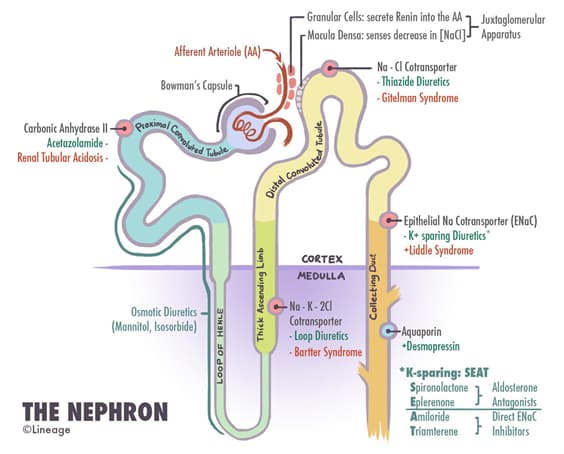Overview

Snapshot
- A 58-year-old African American man with a history of hypertension presents with pain in his right great toe. His hypertension has been well-controlled on one medication. He has some difficulty walking but reports no other symptoms. Physical exam reveals significant right first metatarsophalangeal joint redness, swelling, and tenderness to palpation. He is prescribed a non-steroidal anti-inflammatory drug and his hypertension medication is changed. (Gout)
Introduction
- A class of diuretics that include
- hydrochlorothiazide (HCTZ)
- metolazone
- indapamide
- chlorthalidone
- Mechanism
- Clinical use
- hypertension and congestive heart failure (CHF)
- first-line therapy for African Americans and the elderly
- idiopathic hypercalciuria
- osteoporosis
- hypertension and congestive heart failure (CHF)
- Toxicity
- hyperglycemia
- hyperlipidemia
- hyperuricemia
- avoid in patients with gout
- ↑ the toxicity of digoxin
- contraction alkalosis
- sulfa allergy



